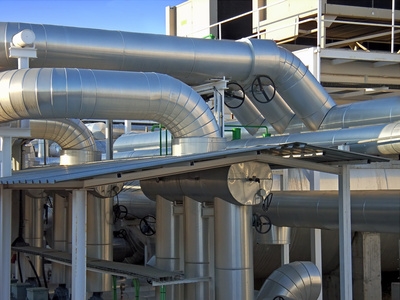
The first steam turbine invention dates back to the first century AD. The so called "aeolipile or Hero engine" is considered to be the first recorded steam engine. Its modern manifestation was invented by Sir Charles Parsons in 1884, and made possible the production of huge amounts of energy. Steam turbines today are employed in a wide range of applications. Modern steam turbines are manufactured by some of the most well-known multinational enterprises, like GE and Siemens. Steam turbines have a few drawbacks, although approximately 80 percent of the world's electricity is reliant on steam turbines.
The power of steam turbines ranges from 1 horsepower up to 1.5 GW (approximately 2,000,000 Hp). The smaller ones are not very common, because of the disadvantage of the price-to-performance ratio. This applies also for steam turbines up to several MW (1 MW = 1000 kW). In thermoelectric installations, where the sun heats a liquid (thermal oil) and then steam is produced to drive a steam turbine, the installation must be at least five to ten MW, because the cost for a smaller turbine is nearly the same as for a larger one. Therefore, the return on investment for smaller thermoelectric installations--less than five MW--is not considered by investors.
A low pressure steam turbine produces a side effect that is difficult to handle. The steam pressure in that case drops under 1 bar. In different locations of the blades of the last stage, steam reaches the speed of sound. To avoid erosion steam flows through a centrifugal separator where the drops are deposited through centrifugal force. Inside the turbine a radial pressure gradient takes place because of the descent of pressure and, therefore, unequal flow velocities are prominent over the blade height.
A slight imbalance of a rotor of a steam turbine can lead to vibration and finally disaster. In extreme cases the blade can punch straight through the casing. Turbines have to be turned with dry steam. If a moister carryover occurs blades can erode and finally this can lead to a complete failure.
A steam turbine has a slow load change behavior, which means once running the turbine cannot be stopped quickly. A specific amount of time is needed to slow down its revolutions. Therefore, rapid maintenance task is hindered, costing both money and time. Steam turbines are not suitable for applications in which a fast change of performance is desired.